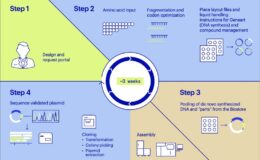
KATERYNA KON/SPL/Getty
A smartphone app can detect signs of norovirus, the most common cause of gastroenteritis.
Jeong-Yeol Yoon and his colleagues at the University of Arizona in the US built the system using a microscope attachment for a smartphone and a separate light source. Combined they can detect low levels of norovirus in water.
The technique is sensitive enough to detect as little as 10 attograms (10−18 grams) of norovirus per millilitre, which is six orders of magnitude better than other portable detectors, says Yoon. As few as tens of norovirus particles are enough to make people sick, he says.
Advertisement
Also known as the winter vomiting bug, norovirus is notorious for causing outbreaks of vomiting and diarrhoea in crowded situations, such as on cruise ships.
To test for norovirus, the team added water samples to a paper chip that contains tiny beads of fluorescent polystyrene. These beads have antibodies against norovirus on their surface. When particles of the virus are present, they bind to multiple beads, clumping together.
It works in a similar way to a pregnancy test, which contains antibodies that bind to hCG, the hormone present in the urine when a woman is pregnant.
When viewed through the smartphone microscope, the clumps produce a larger fluorescence. An app on the smartphone analyses the number of lit pixels it sees, converting that into a count of norovirus particles.
Detecting small amounts of norovirus in food or water usually involves replicating viral DNA for sequencing, a process that takes several hours and can only be done in a laboratory.
Read more: Genetically modified virus may shrink incurable brain cancers
The team is using the portable technique to monitor groundwater sources in Tucson, Arizona. It enables them to test water sources directly instead of bringing samples back to a lab.
Next they will analyse stool samples in patients to determine whether the technique can be used to diagnose norovirus infections earlier.
The research was presented at a national meeting of the American Chemical Society in San Diego.
More on these topics:














